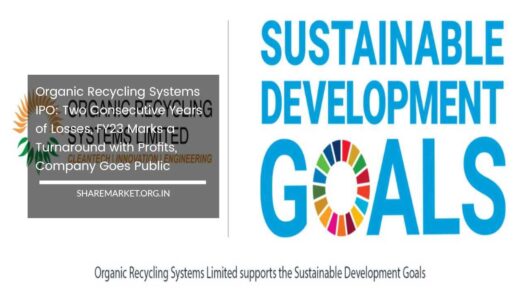Niva Bupa IPO Listing: Stock lists at 6% premium on NSE

Niva Bupa IPO Listing
Niva Bupa IPO Listing: ₹74 Stock Gives 6% Listing Gain, But Weak June Quarter Results Raise Concerns Over Business Outlook
Niva Bupa Health Insurance IPO Listing Update: Niva Bupa Health Insurance, one of India’s leading private health insurance providers, saw its initial public offering (IPO) listed on the stock exchanges today.
Despite delivering a modest 6% listing gain to investors, there are concerns over the company’s financial performance, particularly in light of a weak business performance during the June quarter of the current fiscal year.
Niva Bupa Health Insurance IPO: Listing Details
Niva Bupa’s ₹2,200 crore IPO was open for subscription from November 7-11, 2024, and the shares were priced at ₹74 each.
Upon listing on November 14, 2024, the stock opened at ₹78.50 on the Bombay Stock Exchange (BSE) and ₹78.14 on the National Stock Exchange (NSE), marking a 6% premium over the IPO price. This gave early investors an immediate listing gain.
The stock saw further movement during the trading session, peaking at ₹80.94 on the BSE, before witnessing profit-booking, which led to a correction.
The stock ended the day flat at ₹74.00, closing exactly at the IPO price, thus leaving investors who purchased at the IPO price with no gain or loss.
The intra-day low was ₹73.60, highlighting some volatility in early trading. Despite this, the listing represented a decent start for Niva Bupa in the public market, especially considering the volatile market conditions and the mixed response to the IPO.
Mixed Response to Niva Bupa IPO Subscription
The Niva Bupa IPO received a mixed response from investors, with varying levels of interest across different categories.
The overall subscription of the IPO was 1.90 times, indicating moderate interest. However, the subscription figures tell a more nuanced story when broken down by investor category:
- Qualified Institutional Buyers (QIBs): This segment, which includes large institutional investors such as mutual funds, banks, and insurance companies, showed strong interest, with the portion reserved for QIBs being subscribed 2.17 times.
- Non-Institutional Investors (NIIs): This category, which includes high-net-worth individuals (HNIs) and other large investors, showed weaker demand, with the portion allocated to them being undersubscribed at just 0.71 times. This suggests that large investors may have been hesitant to buy into the offering, possibly due to concerns over the company’s performance and market conditions.
- Retail Investors: Retail demand was relatively strong, with the portion reserved for retail investors being oversubscribed at 2.88 times. This highlights retail investors’ continued interest in the health insurance sector, possibly driven by the company’s growing market presence and long-term growth potential.
The IPO raised ₹2,200 crore, with ₹800 crore coming from the issuance of new shares, while the remaining ₹1,400 crore came from the Offer for Sale (OFS) portion, where existing shareholders sold their stake.
The funds raised through the new share issuance will primarily be used to enhance the company’s capital base and improve its solvency position, which is essential for a health insurance company to meet regulatory requirements and ensure its long-term financial stability.
Niva Bupa’s Financial Performance and Recent Challenges
Niva Bupa Health Insurance was established in 2008 as a joint venture between the UK-based Bupa Group and Fetal Tone LLP. The company offers a wide range of health insurance products, catering to both individuals and corporate groups.
Its business operations span across 22 states and 4 union territories in India, making it one of the largest players in the country’s growing health insurance market.
Over the past few years, Niva Bupa has shown significant improvement in its financials. After reporting a net loss of ₹196.53 crore in FY 2022, the company managed to turn its fortunes around in FY 2023, posting a net profit of ₹12.54 crore.
In FY 2024, the company’s net profit further grew to ₹81.85 crore, signaling that it was gaining traction in the competitive health insurance industry.
Moreover, its revenue grew at a compound annual growth rate (CAGR) of more than 47%, reaching ₹4,118.63 crore in FY 2024.
However, the company’s performance in the first quarter of FY 2024-25 (April-June 2024) has raised concerns.
Despite strong revenue of ₹1,124.90 crore for the quarter, Niva Bupa reported a net loss of ₹18.82 crore.
This marks a significant deviation from the profitability trend observed in the previous fiscal year.
The loss in Q1 FY 2024-25 can be attributed to a combination of factors, including increased claims, rising healthcare costs, and the competitive pricing pressures that continue to affect the health insurance sector.
Why the Weak June Quarter Results Matter
The weak performance in the June quarter comes at a critical time for Niva Bupa, as it seeks to establish itself in the public markets and attract long-term investors.
Health insurance companies are facing a tough business environment, with rising medical inflation and increasing competition from both established players and new entrants into the market.
Niva Bupa’s losses in Q1 FY 2024-25 suggest that the company may face challenges in maintaining profitability in the short term.
The growth in claims, as well as the ongoing impact of regulatory changes, are factors that the company will need to manage carefully to avoid a repeat of these losses in subsequent quarters.
Additionally, given the volatility in the stock’s first trading day, investors will likely be cautious about its near-term prospects.
Market Outlook and Future Growth Potential
While Niva Bupa’s recent results may raise questions, the company still holds significant long-term growth potential.
The health insurance market in India remains underpenetrated, and as awareness about healthcare and insurance grows, companies like Niva Bupa stand to benefit from increasing demand for coverage.
The government’s push towards health insurance and the expansion of health schemes for underserved populations also provides opportunities for the company to tap into new customer segments.
Niva Bupa’s strong brand recognition and established presence in the market position it well to capitalize on these trends.
Furthermore, the company’s focus on digital transformation and improving customer service through technology could enhance its competitiveness in a crowded market.
However, to reassure investors, Niva Bupa must address the challenges it faced in the June quarter.
Managing costs, improving claims management, and maintaining underwriting discipline will be key to its ability to achieve sustained profitability.
Final Remarks: A Mixed Outlook for Niva Bupa
The listing of Niva Bupa’s shares was a modest success, with a 6% listing gain on the first day of trading.
However, the weak financial performance in the June quarter of FY 2024-25 is a cause for concern and may influence investor sentiment going forward.
While the company’s long-term growth prospects remain attractive due to the underpenetrated Indian health insurance market, investors will need to keep a close watch on Niva Bupa’s quarterly performance to gauge whether it can overcome the challenges and sustain its profitability.
For now, Niva Bupa faces the task of balancing its growth ambitions with the pressures of an increasingly competitive and cost-sensitive market.
Investors will need to stay vigilant, as the coming quarters will reveal whether the company can build on its recent successes or if the challenges it faces will outweigh its potential for growth.

















